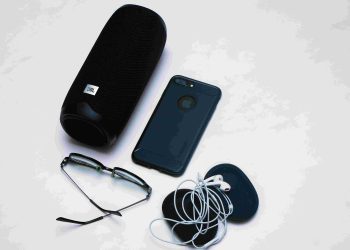Best Practices for Accessory Rating Systems
Can we truly measure style, functionality, or impact?
Accessory rating systems have been a cornerstone of consumer decision-making in modern commerce for years. Yet many of these systems fall short, relying on outdated metrics or superficial criteria that fail to capture what truly matters to users. As the world races toward personalized, technology-driven solutions, it’s time we rethink the way we evaluate accessories—moving beyond stars and scores to systems that actually reflect purpose and value.
From My Own Closet to a Broader Challenge
A few years ago, I faced a dilemma while purchasing a smartwatch. While browsing reviews, I realized that tens of thousands of ratings were based on generic parameters like comfort or battery life—not on how the device integrated into daily routines or whether it enhanced productivity. This personal frustration led me to question: How do we define value in the accessories we buy? This micro-level issue mirrors macro-level failures in consumer product assessment—a disconnect between numbers and subjective experience that leaves most users stranded between marketing hype and buyer’s remorse.
Breaking the Mold: Why Traditional Rating Systems Fail
Mainstream accessory rating systems operate on rigid, reductionist frameworks. By distilling quality into numerical values like ‘5-star ratings’, they often miss nuances critical to user satisfaction. Psychology tells us that decision-making is heavily influenced by emotional resonance, yet few systems address questions like: ‘Does this accessory make me feel empowered? Does it solve a unique problem in my life?’ Traditional systems overvalue conformity while underestimating individuality—a flaw that has profound implications in the age of bespoke, human-centric design.
Pioneering Interdisciplinary Insights
To redefine accessory rating systems, we must embrace cross-disciplinary thinking. Borrow concepts from psychology, such as Daniel Kahneman’s ‘peak-end rule’, which highlights the importance of capturing overall impression rather than isolated experiences. Apply design philosophy, ensuring accessories are rated not just for aesthetics, but for their emotional and functional impact on users. Utilize data science to track trends in consumer behavior and artificial intelligence to predict how accessories fit into evolving lifestyles. This blend of knowledge creates the foundation for holistic evaluation systems.

Future Trends: Where Rating Systems Are Heading
The future belongs to dynamic, adaptive rating systems driven by AI algorithms and user feedback loops. Imagine a platform where accessories are evaluated in real-time based on user contexts: a traveler’s needs differ dramatically from a remote worker’s. With advancements in wearable technology and the Internet of Things, accessory performance metrics could be linked to real-world data—assessing durability, user engagement, and even emotional reactions gleaned from facial expressions or speech patterns.
Real Solutions for Real Challenges
If you’re a product designer, business owner, or even an everyday consumer, here are actionable steps to build better accessory rating systems:
-
Reframe Criteria:
Focus on factors like usability, emotional impact, and adaptability over vague metrics like ‘popularity’. -
Create Persona-Specific Systems:
Customize ratings for particular user demographics—whether it’s adventurers, parents, or young professionals. -
Incorporate Feedback Mechanisms:
Have users co-create ratings with detailed reviews showcasing personal experiences. -
Embrace Emerging Technologies:
Invest in AI-driven solutions capable of personalizing recommendations based on user history. -
Encourage Transparency:
Rate accessories honestly by highlighting both their strengths and weaknesses.
These methods ensure the accessory rating ecosystem becomes not just a digital gallery of opinions, but a credible advisor on utility and personal fulfillment.
The Call to Action
Our lives are defined by the tools and accessories we choose. From professional needs to personal aspirations, accessories should serve as extensions of ourselves—not just commodities. It’s time to demand higher standards for how these items are evaluated, transforming ratings into meaningful reflections of value. As consumers, we can champion systems that prioritize relevance and individuality by leveraging smarter tools and seeking deeper insights.










